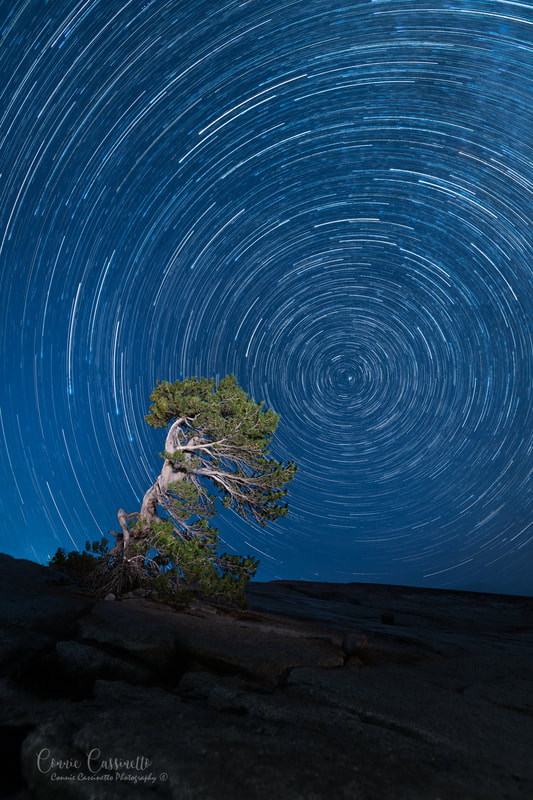|
Taking photographs at night can be difficult and the difficulties increase with the number of other photographers present! I recently shot with a small group of photographers in the Tuolumne Meadows area of Yosemite National Park. We were all stumbling around in the dark with headlamps trying to figure out focus and composition (and keep our footing), without really being able to see anything! Not only was it night but we were on rock hillsides and uneven terrain with tripods and multiple cameras. I, and others, would forget that we could not turn on the headlamp when we needed it, even in red light mode, when other people were shooting. This meant if I lost focus for some reason I had to fumble around with the camera settings and try to find something with light on it to focus, and then reset the composition. I got more than one shot that had someone's headlamp red light in it and I was even almost yelled at once for forgetting and turning on my light. Night shooting is tough!
In spite of it all, I got a few decent shots and I learned a lot in the process. I have shot at night before but not in awhile and this was my first time attempting to shoot images to create a star trail. I found, when I got home and looked at my shots, that I apparently cannot keep the camera still for long as I kept moving the composition when I really shouldn't have. I used the Starry Landscape Stacker software program to combine scenes for Milky Way images as the combining of scenes decreased the noise in the images. I used Photoshop for the 25 4-minute each images to create the star trail shot posted here. Creating a star trail shot was labor intensive, both in setting up to shoot it and in putting it together in Photoshop. The trip was a good experience and I learned a lot and it was nice to finally get out on a trip in this era of Covid-fear.
0 Comments
|
AuthorI am a photographer, it is my passion, my avocation, and almost everything I do revolves around it. Archives
May 2024
|
